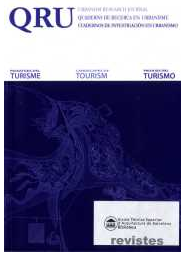Il paesaggio del camping nella storia: dall’impatto zero alla colonizzazione intensiva
DOI:
https://doi.org/10.5821/qru.9586Abstract
Camping is an open air type of accommodation that satisfies the requirement of a symbiotic relationship between the tourist and nature. Born as a spontaneous practice without impact on the landscape, it becomes more invasive with the advent of mass tourism, colonizing large areas in an intensive and irreversible way. The paper reconstructs the evolutionary phases of the campsite as a tourist infrastructure since its inception (early twentieth century) to the presentDownloads
Issue
Section
License
Those authors who have publications with this journal, accept the following terms:
a. Authors will retain their copyright and guarantee the journal the right of first publication of their work, which will be simultaneously subject to the Creative Commons CC BY-NC-ND-4.0 recognition license that allows third parties to share the work provided that its author and its first publication are indicated in this journal, but they cannot be changed or used commercially.
b. Authors may adopt other non-exclusive license agreements for the distribution of the version of the published work (eg: deposit it in an institutional telematic archive or publish it in a monographic volume) provided that the initial publication in this journal is indicated.
c. Authors are allowed and recommended to disseminate their work through the Internet (e.g. in institutional telematic files or on their website) before and during the submission process, which can lead to interesting exchanges and increase citations. of the published work. (See The effect of open access).













